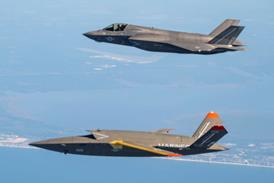THE WRIGHT Laboratory, at Wright-Patterson AFB, Dayton, Ohio, in the USA, is carrying out a range of studies into more-electric aircraft technology. Its Aerospace Power division is charged with developing high-performance, cost-effective aerospace power systems for existing and future aircraft.
A major project involves flight tests of a US Air Force Lockheed NC-141A Starlifter fitted with Lucas electric aileron- actuators, which replace the aircraft's electromechanical devices. The first aircraft has completed 20h of flight-certification testing, and is now embarked on 1,000h of operational flying over an 18-month period. The test aircraft is fitted with a Lucas integrated actuation package.
It is hoped that the C-141 Electric Starlifter programme will show that use of electric actuators can increase the aircraft's battle-damage tolerance, improve reliability and maintainability and reduce the amount of ground-support equipment which is required. The USAF says that the electric actuators also save airframe weight, with the fly-by-wire aileron controls replacing an existing, centralised hydraulic system. If the C-141 trial proves to be a success, electric actuators could be retrofitted to a range of USAF aircraft, beginning with C-141s and continuing to Lockheed C-5 Galaxys.
The laboratory also has a contract from Northrop Grumman to develop an advanced electrical-generation and distribution system demonstrator, electric power-management and distribution system for more-electric aircraft (MADMEL).
The MADMEL demonstrator will be used to "-resolve technical issues of developing and implementing an electrical-power system for more-electric aircraft", says the Aerospace Power division. It will incorporate a 270V DC power supply, and be used to investigate issues of fault-tolerance, electromagnetic interference and stability, before integrated more-electric-aircraft technologies are tested.
The Aerospace Power division has also developed a more-electric aircraft integrated power unit (IPU), designed to provide up to 250kW peak, and 125kW (at 270V DC) minimum continuous electrical power. The IPU can perform main-engine starting, and provide emergency in-flight power and auxiliary ground power.
The unit uses a switched-reluctance generator, and its turbines are mounted on a common rotor-shaft, supported by oilless magnetic, bearings. The project is aimed at developing an advanced IPU "-capable of filling the auxiliary power needs of a more-electric aircraft", says the division.
Another area being investigated is cooling systems for aircraft power electronics. It is likely that future aircraft-power management and distribution systems will require cooling rates of up to 6MW/m2.
Source: Flight International























